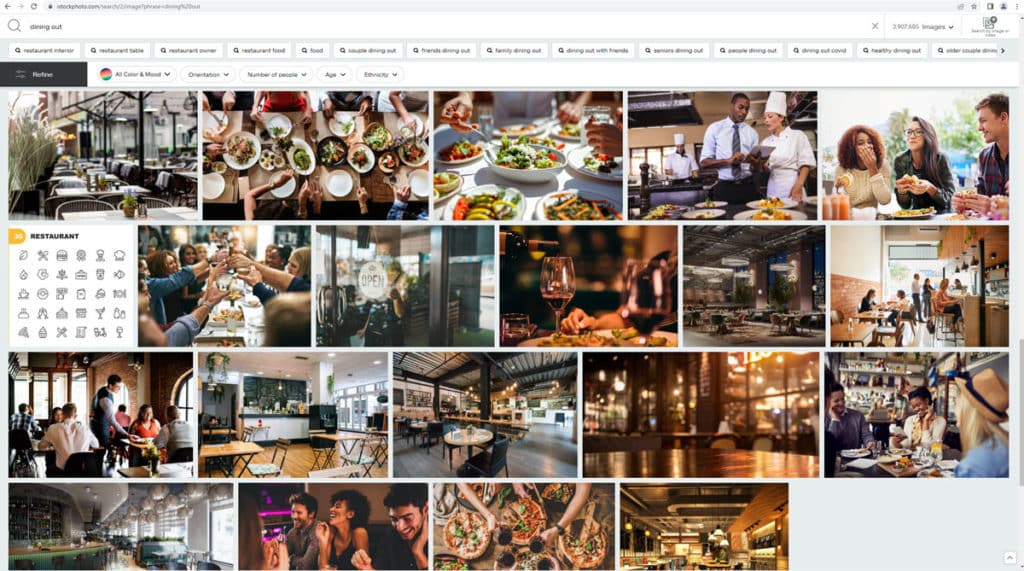You’re scrolling through a newsfeed and a video catches your attention. You pause to see what it is, and then you’re drawn in. You go from intrigued to learning more. When you think about the video, you realize you remember a significant amount of the message. Before you know it, you’re scheduling that appointment or ordering that product.
That is the power of video and images – the vital components that make up visual marketing. Video and images are so effective that 84% of consumers say that watching a brand’s video persuaded them to buy a product or service, and 54% say they want more video content from brands with whom they do business.
When you consider that consumers retain 95% of a video’s message, compared to only 10% of the same message presented in text form, it makes sense: visuals provide context, and where there is context, there is a story to help the viewer remember the overall message.
One more interesting statistic: online videos are on track to make up more than 82% of consumer traffic on the internet. It’s safe to say that video is becoming the main way businesses market to their consumers. Keep reading to find out how you can harness the power of visuals to achieve the most competitive edge in the marketplace.
How to Use Video and Images
Attract
Attracting consumers means more than just bringing awareness to your services or products. With video marketing becoming increasingly prevalent, this dynamic form of advertising is competing for consumers’ attention like never before.
Super Bowl ads are a great example of how brands use engaging visuals to get their customers’ attention. Anyone who has watched the Super Bowl knows that the commercials are as much a water-cooler topic as the game itself (sometimes even more). They range from goofy to sentimental to provocative to outrageous, and everyone has a different favorite ad because brands take the time to research their target audiences and create ads based on what attracts them.
This approach works just as well for businesses on a local or regional scale. For example, this commercial for a regional telecom company shows everyday people enjoying the variety of services available, in settings that feel familiar to the target audience. There’s a timelessness and a universality about the sentiment of people connecting and spending time with loved ones.
Every brand has a target market. To attract your target audience, speak to their lifestyles, values, and tastes, and show how your product or service has relevance in their world by tying it to something meaningful to them.
Inform
With so much information at their disposal, consumers today are more inclined to research a product before making a purchase. They want to learn about what is available and how to get the most from it. Visual marketing can give your audience information in a format that is easy to retain. Product tutorial and testimonial videos, interviews, infographics, visual instructions – these are all great examples of how to utilize visual marketing to your advantage.

Convert
Ultimately, the goal of your visual content is to convert viewers into paying customers. When your audience notices your video or images, connects with the message, and remembers it, they’ll be far more likely to follow through with a purchase.
The key at this point is engagement. Channeling the power of visual marketing helps your brand stand out and communicate why people should buy your products or use your service, instead of your competition.
Where to Get Video and Images
Stock Images
Lots of websites specialize in stock images and video. Free sources like Pexels, Unsplash, and Pixabay are all peruse-worthy. Depending on your marketing budget, you may wish to browse premium options, like iStock, Shutterstock, and Adobe Stock. You can find nearly anything you want on these sites, and since the stock is supplied by photographers, the quality of images is good. Keep in mind that some stock image sites may require that you give credit to the photographer who took the image you use.

Something to keep in mind about stock images: even with literally millions of images to choose from, there’s a chance that that perfect image you found may be in use by a competitor. For example, it could be confusing for consumers if two competing ticket resale companies used the same image of a crowd of cheering concertgoers in their separate marketing campaigns. For that reason, even though the stock photo option may work for you in some cases, it isn’t the best method to solely rely on if you’re trying to set your business apart from the rest.
Build Your Own Library
An even better resource for visual content is your own videos and images. This route is well worth the time and effort it takes to compile an original video and image library, because it will further set your brand apart from your competition and give you ownership over your brand. Showcasing video of your team also helps you personally connect with your audience, like a local commercial HVAC company did in this recruitment video.
Strive to build a library with a mix of evergreen images (or those that stay relevant for the long term) and some new material on a regular basis. Perhaps you have cultivated your photography skills and know your way around a camera, but if not, working with a professional will provide you with polished images to represent your business.
At Stray Media Group, we’re in the business of helping companies reach their maximum potential. Contact us today to learn more about how we can help elevate your brand through creative ideas and custom photography, videography, and drone cinematography services.




